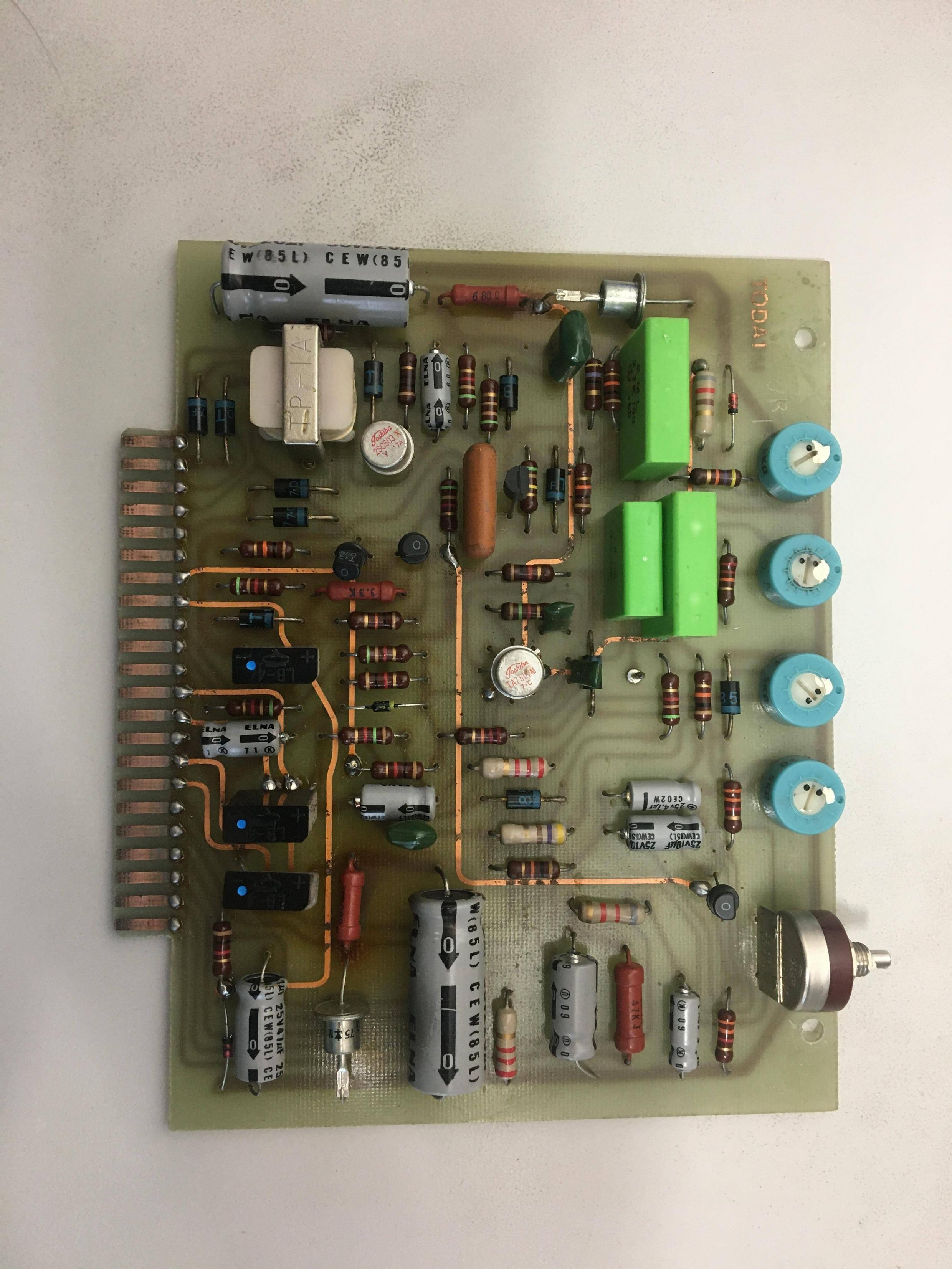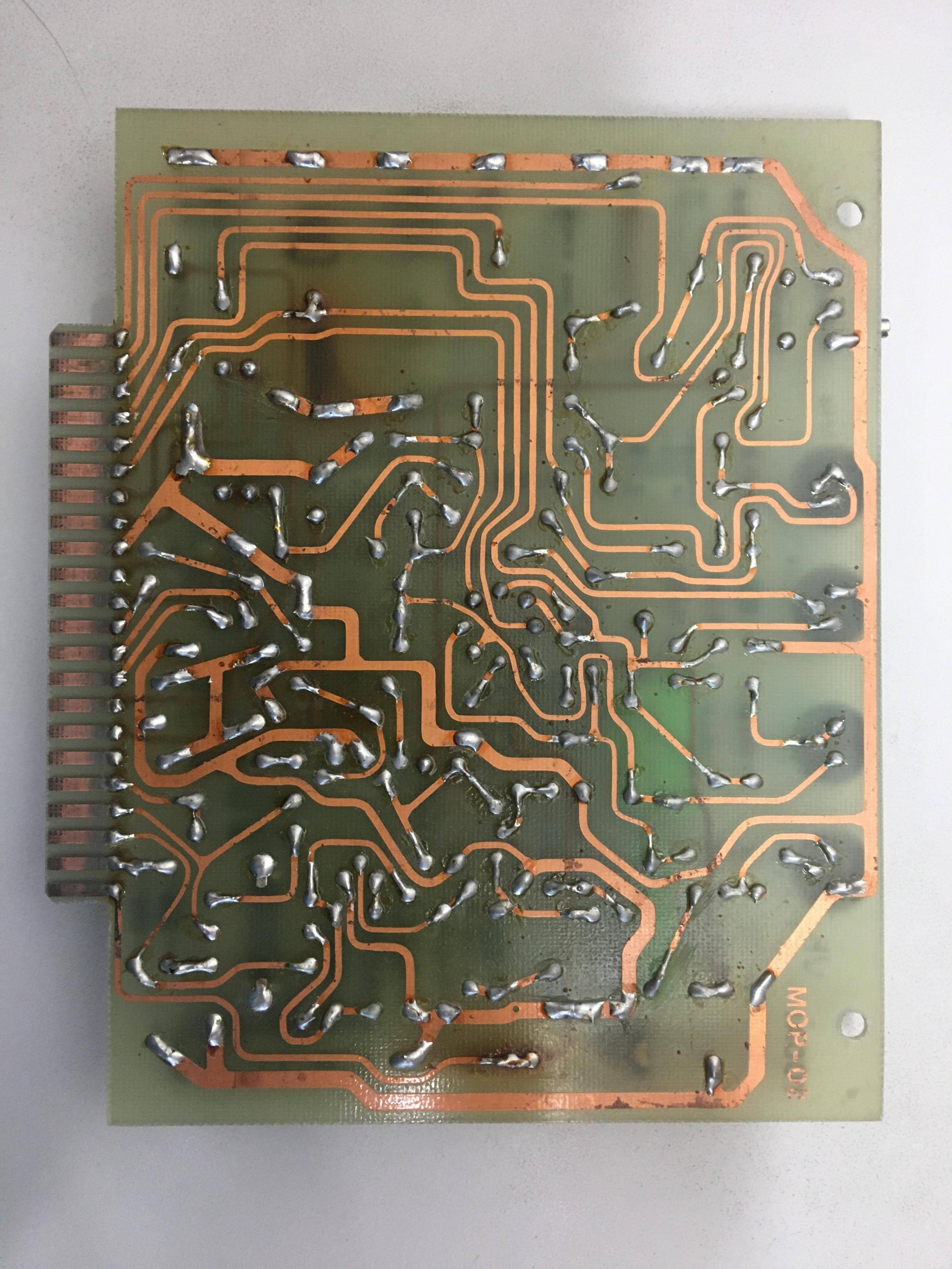This board performs the speed control logic for a 3 HP shunt-wound DC motor driver in a CNC mill built in 1979. The spindle turned on intermittently last week and then stopped working, so I'm reverse engineering the circuit to debug it.
I've ID'd everything except these three black components with the blue dots near the card edge connector. They each have four leads, and the only markings are "LB-4", a little chat bubble like logo, and +, - markings for two of the leads.
There's no continuity between any of the leads. Can anyone help me identify these?
I'm also not certain about the three big green bricks. They seem to just be power resistors but the markings on them say
E M L
2.2K 100
(logo) 0.60
for the large two and
1K 100
(logo) E.776
for the small one, where (logo) is a little downward arrow in a circle. What has me skeptical about the 'power resistor' guess is that they measure more than 2.2 kohms.

Edit: Back image:

